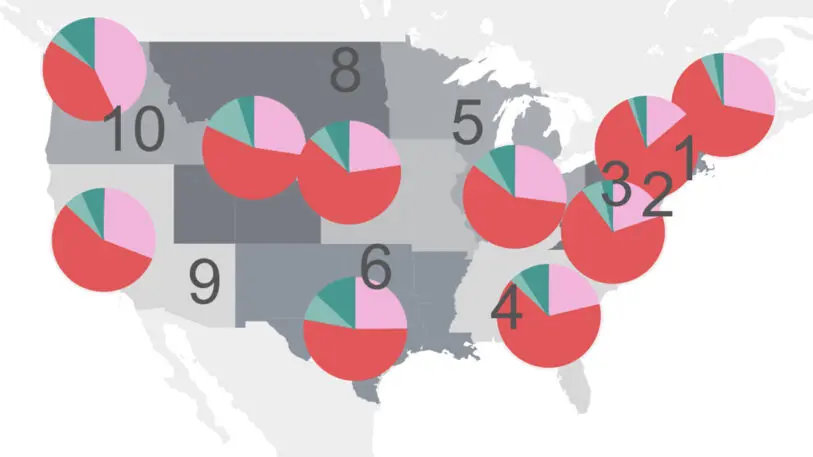Though the COVID-19 pandemic may seem like a thing of the past to some, the world is still actually gripped by it. Recent waves of newer omicron sub-variants have swept through South Africa and Portugal—and those variants are taking hold in the United States, according to data published by the Centers for Disease Control and Prevention (CDC) this week.
Here’s what you need to know:
- What are BA.4 and BA.5? BA.4 and BA.5 are sub-variants of the omicron variant of COVID-19. In other words, they are new, mutated versions of omicron. The CDC lists omicron as a variant of concern.
- What is a Variant of Concern? The CDC defines a VOC as “A variant for which there is evidence of an increase in transmissibility, more severe disease (for example, increased hospitalizations or deaths), a significant reduction in neutralization by antibodies generated during previous infection or vaccination, reduced effectiveness of treatments or vaccines, or diagnostic detection failures.” In other words, a VOC is a version of COVID-19 that is shown to be more contagious, virulent, or deadly.
- Are BA.4 and BA.5 more transmissible and do they cause more serious disease? Right now, scientists believe the answer is yes, the sub-variants are more transmissible, but no, they don’t cause more serious disease. According to MedPageToday, “The bottom line is that BA.4 and BA.5 are very highly transmissible, cause little severe disease, and are responsive to boosters (although protection wanes), monoclonal antibodies, and antivirals.”
- If BA.4 and BA.5 cause mild disease, why are people worried? Because even though a virus may cause mild disease in most people, there are still groups of people it may cause serious disease in, or even death. And since transmissibility is high, that means more people could become infected, which means an increase in a proportion of those who will experience serious disease or death. Moreover, public health researchers are growing increasingly concerned about the long-term impacts of “long COVID,” about which little is still known.
- How widespread are BA.4 and BA.5 in America? According to the CDC’s data, as of June 4, BA.4 accounts for an estimated 5.4% of total cases in the United States. BA.5 accounts for an estimated 7.6% of cases. That means together, BA.4 and BA.5 account for 13% of all cases—and that percentage is growing. (Note, these percentages are based on the agency’s Nowcast tool and are subject to change with future estimates.)
Some areas of the country have higher rates of BA.4 and BA.5 than others. Here’s what the CDC says rates are like across the country:
- New York/New Jersey area: BA.4 makes up 2% of cases. BA.5 makes up 4% of cases.
- Upper Northeast: Includes states such as Massachusetts and Maine. BA.4 makes up 4.4% of cases. BA.5 makes up 2.8% of cases.
- West coast: Includes California, Washington, and Oregon. BA.4 makes up 6.3% of cases in California and 4.1% of cases in Washington and Oregon. BA.5 makes up 6.8% of cases in California and 11.7% of cases in Washington and Oregon.
- South East: Includes states such as North and South Carolina. BA.4 makes up 6.9% of cases. BA.5 makes up 3.3% of cases.
- South Central: Includes states such as Texas and New Mexico. BA.4 makes up 8.9% of cases. BA.5 makes up 13.2% of cases.
- South: Includes states such as Florida and Alabama. BA.4 makes up 3.9% of cases. BA.5 makes up 9.1% of cases.
You can check out the CDC’s latest Nowcast map here.

Recognize your brand’s excellence by applying to this year’s Brands That Matter Awards before the early-rate deadline, May 3.
